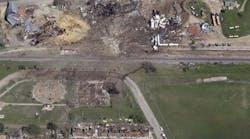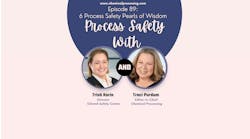On April 17, 2013, the West Fertilizer Co. blending and distribution facility in West, Texas, exploded, killing 12 emergency responders and three other people living close to the site, and causing more than 260 injuries. The U.S. Chemical Safety and Hazard Investigation Board, Washington, D.C., issued its Final Investigation Report in January 2016. That 264-p. report, downloadable here, remains relevant today. Indeed, the issues identified and the lessons learned from that disaster certainly deserve review at many other plants, and should be shared with those who have entered our industry since then.
The site had a stockpile of between 40 and 60 tons of fertilizer-grade ammonium nitrate (FGAN) as well as an additional volume not yet unloaded from a railcar. Around 7:30 that night, the first signs of a fire were reported to local responders. An explosion occurred only about 20 minutes later. The blast completely destroyed the facility and damaged more than 150 buildings off-site, with about half of them needing complete demolition before reconstruction.
Important conclusions of the report include:
• Combustible materials like wood used for construction offered potential fuel for a fire while provision of limited fire safety features exacerbated risk. The FGAN was stored in bins made of plywood and the facility lacked an automated sprinkler system.
• A previous insurer had dropped coverage because West had not addressed safety concerns identified in loss control surveys. Yet, the insurer at the time of the explosion apparently had not performed its own safety inspections of the facility.
• The local volunteer fire department did not conduct pre-incident planning or response training at the West Fertilizer site, and likely was unaware of the potential for FGAN detonation. Moreover, the responders failed to set up an incident command system, lacked an established incident-management system, did not check safety data sheets, and had not had appropriate training in hazardous materials response. No in-place emergency plan alerted first responders and people in the surrounding community of the need to evacuate at the first sign of a fire in the FGAN facility.
• The location of the facility worsened the off-site consequences of an explosion. The unit was constructed in 1962, and apartments, a nursing home, a school, etc., were built nearby afterward. No local zoning regulations prevented this. (The report notes the West Fertilizer situation is far from unique — many communities nationwide are located too close to hazardous sites.)
• Adoption of inherently safer technology could have significantly reduced risk. (For some pointers on this approach, see: “Use Elegant Design to Bolster Inherent Safety.”)
• Shortcomings in federal regulations existing then led to an under-appreciation of hazards, inadequate plant practices and other lapses in addressing actual risks.
The report is somber reading. Unfortunately, many of the points it illuminates still afflict plants today. Some of these issues certainly don’t lend themselves to fast, easy or, sometimes even, practical solutions. However, addressing others, such as gaps in emergency plans and dialogue with first responders, may not be as daunting to fix. Indeed, I suggest making a review of emergency plans and first responder preparedness a priority.



